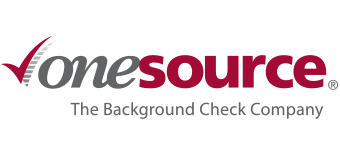Why is Rescreening Important?
These days most organizations typically have a standard process for screening staff prior to onboarding. According to a 2021 study by Aptitude Research, nearly 80% of organizations are screening staff members before onboarding.
What happens to these staff after you onboard them? Sure, many HR Departments have a policy in place that may require team members to self-report incidents, but how do you know that’s really happening?
In the past decade, rescreening staff has become a hot topic. More and more companies are minimizing the gaps in the safety of their staff by rescreening, and it’s only growing in popularity.
Why should you rescreen?
Rescreening and monitoring staff backgrounds can be considered for various reasons. These can include, but aren’t limited to:
- Promotion or change in responsibilities: Employees gain access to company finances, credit cards, or building keys.
- Maintaining company standards: You screened your staff or volunteers before onboarding them, and now you want to ensure they are being held to those same standards.
- Industry or compliance requirements: Many industries like healthcare, education, or transportation have ongoing screening requirements.
We see organizations with a variety of industry requirements or internal policies in place. This could include annual rescreening of all team members; some conduct it every two to three years and others utilize ongoing monitoring solutions that are run monthly. Others only do it when there is a promotion or change in the company structure. No matter your process…
Don’t forget compliance!
Any rescreening or continuous monitoring must still comply with the Fair Credit Reporting Act (FCRA). Ensure your organization is following federal and state laws regarding disclosure and authorization. Additionally, if the results of a rescreen create a scenario where you will separate from that individual, be sure you are following the adverse action process.
If you want to include authorization to allow for ongoing screening throughout their time with the company, this must be stated clearly in the initial disclosure. As always, we recommend consulting your legal counsel to ensure your forms are compliant and up to date.
I want to rescreen; what are my options?
When it comes to rescreening, One Source has several options:
- Batch Upload: We work with you to establish a rescreening package to meet your standards. Whether this is the complete criminal background, healthcare exclusions, motor vehicle records, or something else, we can customize it to fit your needs. Applicants can then be uploaded directly into our system to be run. Frequency is then up to you.
- Continuous Criminal Monitoring: This is an automated search of over 650 million records, including a Global Report, Multi-Court Jurisdictional Database, and National Sex Offender Registry search. The individuals you enroll in monitoring will automatically search for new records at the beginning of each month. Results will be verified by our team to ensure accuracy and the report will be provided back to you.
- Other Monitoring Solutions: Outside of criminal monitoring, One Source can also monitor through other screening solutions, including healthcare monitoring and social media monitoring.
Ready to get started?
Incorporating rescreening or continuous monitoring into your screening process could be the difference in creating a safer environment for your organization. To keep the trust between you and your team members, make sure your continuous monitoring policy is clearly stated when they are onboarded, and then remind them on an annual basis. When you start your continuous monitoring, you want to have shared expectations between you and your team members. If you are interested in learning more or would like to add this service to your process, contact us.
For more information on background screening, check out more of our blog or get in touch today.
